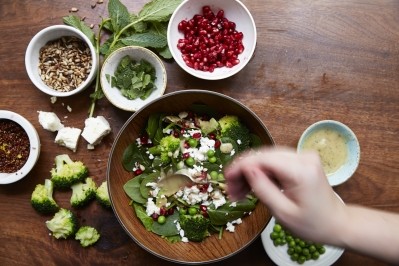Trends
Top 12 food trends for 2016, reveals Mintel

Demand for more veggie burgers and non-dairy milks – or Alternatives Everywhere – tops Mintel’s list of 12 food and drink trends food businesses should consider this year.
That’s according to the organisation’s food and drink analyst Jenny Zegel, who said: “These trends explore how consumers’ evolving priorities, opportunities from advancements in functional formulation and the almost inescapable reach of technology will affect food and drink in the coming year.”
Of the top trend, she added: “Veggie burgers and non-dairy milks have escaped the realm of substitutes primarily for people with dietary concerns and followers of vegetarian diets.
“Instead, the growing ranks of novel protein sources and potential replacements appeal to the everyday consumer, foreshadowing a profoundly changed marketplace in which what was formerly ‘alternative’ could take over the mainstream.”
The other top food and drink trends for 2016 are:
Artificial: Public Enemy Number One predicts consumer demands for ‘less processed’ food and drink will continue to force food businesses to remove artificial ingredients from their products.
“Products that have yet to do so, will face scrutiny – or worse – from consumers who are looking for natural formulations with recognisable ingredients,” the report said.
Worries about droughts and food waste, as well as other natural phenomenon, would play heavily on consumer minds next year. Eco is the New Reality is a trend that will see consumers look for options that are kinder to the environment to counter their fears about the environment.
Consumer understanding of how diets can affect their appearance should encourage more businesses to focus on the next trend, which is From the Inside-Out.
“As the adage goes with beauty: ‘it’s what’s on the inside that counts’,” said the report.
“Consumers are recognising that diets can connect with the way they look and feel.”
For Every Body is a trend that focuses on the consumers’ rising interest in fitness and becoming more active.
This trend creates an opportunity for food businesses to develop new dishes that have added protein and other nutrients that are vital to building muscle or even muscle repair after exercise.
Based on a True Story is a response to the continued trend of food origin, according to the report.
“Consumers have been romanced by product origin, ingredients or inspiration stories … this proliferation and occasional propagation will find consumers and regulators alike seeking products with verified claims.”
Consumers are thinking outside of the physical and are turning more towards the internet and apps to find what they like. E-Revolution from carts to Clicks, although mostly about food retail, will see consumers access more deals and niche offerings and even full meals using apps and the internet, Mintel said.
Diet by DNA has already seen consumers turn to the foods their ancestors would eat – especially considering the interest in the paleo diet in recent years.
“Interest in natural and ‘getting back to basics’ has boosted ancient grains and superfoods, fostering a principle that age-old staples are better than today’s manufactured options,” it added.
“Interest in historical ingredients suggests that people could make efforts to unlock the keys to their personal physiology and design diets by connecting with their own ancestry or genetic make-up.”
The Good Enough to Tweet trend acknowledges that the rise of food-centric media has sparked a new interest in cooking, not only for the sake of nourishment, but for the purpose of sharing one’s creations via social media.
This rise in foodie social media is an important trend for the foodservice to re-acknowledge, as more and more consumers eat out to share pictures with their followers and to gain inspiration for their own dishes. Therefore providing free promotion.
While the hospitality sector is a social one, the rise in single-occupant households brings with it an opportunity for food businesses.
The Table for One trend should help erode any stigma associated with dining alone, the report said.
“Across age groups, more consumers are living in single-person households or occasionally eating meals alone.”
Fat Sheds Stigma acknowledges the demise in consumers’ beliefs that all fat content is evil, according to the report.
“The awareness of the many sources of good and bad fats is ushering in a paradigm shift in which fat content is not the first and foremost consideration – and barrier – in the search for healthy food.”
Eat With Your Eyes marks the final food and drink trend for 2016. “Flavour has long-been the core of innovation, but more visual and share-focused societies call for innovation that is boldly coloured and artfully constructed,” it added.
Businesses can experiment with vibrant colours and novel shapes to make packaged products worthy of consumer praise and social media posts.









